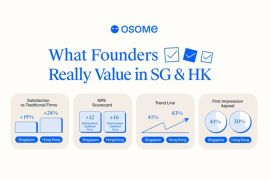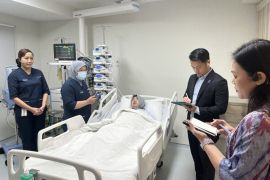(Logo: http://photos.prnewswire.com/prnh/20120514/SF06703LOGO)
Dr. Dirk-Jan Slebos is the principal trial investigator at UMCG. "There is no cure for severe emphysema, and patients have very few options available to relieve their symptoms," he said. "The LVRC is a very exciting technology that has shown great promise in European clinical studies. We have seen significant clinical improvements in treated patients, and we believe this is an important treatment option for many patients with severe emphysema."
The RePneu LVRC is already a proven technique in Europe, having undergone safety and effectiveness evaluation of more than 100 patients in three multi-center European clinical studies, with over 50 patients having been treated at UMCG since 2009. The technology is routinely available to treat patients in Germany, and was the only emphysema treatment method selected by the French Ministry of Health to undergo a multi-center cost-effectiveness study in France starting in early 2013. Unlike Lung Volume Reduction Surgery or other minimally invasive devices designed to treat emphysema, the RePneu LVRC is intended to treat a broad range of emphysema patients, including those with heterogeneous and homogeneous disease, in both upper and lower lobes, and it performs independently of collateral ventilation.
The results of this IDE Pivotal study will be used to support a PMA application for the RePneu LVRC, with the goal of offering the device commercially in the US as soon as possible.
Emphysema is medically characterized by reduced lung function and increased lung volume, which makes breathing very difficult. As the disease progresses and the lung's natural elastic properties are destroyed, excess air is trapped in the lungs, making it difficult for the person to exhale. This process is known as hyperinflation and is responsible for the feeling of being "short of breath."
The RePneu LVRC works by compressing the hyperinflated lung tissue to reduce volume, while helping to restore the lung's natural elastic recoil. The LVRC also helps hold open the lung's airways, preventing airway collapse that causes air trapping and hyperinflation. Implanting the LVRC involves a minimally invasive, non-surgical procedure, and most patients are able to return home the following day.
The RENEW trial is enrolling patients throughout the US and Europe who have been clinically diagnosed with severe emphysema and are experiencing increasing difficulty with simple daily tasks despite optimal medical management. Patients must be over 35 years of age, must have stopped smoking for at least eight weeks and must have completed a pulmonary rehabilitation program within six months and/or be on a maintenance program.
This multicenter, randomized FDA clinical trial will investigate the safety and effectiveness of the RePneu LVRC compared to standard medical care alone. Up to 315 patients in over 25 medical centers across North America, plus centers in the Netherlands, UK and Germany, will participate. Though RePneu LVRC is investigational in the United States and not yet approved for commercial use by the FDA, the device has been used in Europe - in clinical trials and commercially - for the treatment of severe emphysema since 2008.
For more information about the RePneu LVRC and the RENEW study, visit www.pneumrx.com or http://www.clinicaltrials.gov/ct2/show/NCT01608490?term=RENEW&rank=1.
About Advanced Emphysema
Over three million(1) Europeans suffer from advanced emphysema, a chronic, debilitating disease most commonly brought on by years of smoking. Emphysema causes irreversible damage to delicate lung tissue, leading to shortness of breath and even feelings of suffocation that result in reduced quality of life. Emphysema is medically characterized by reduced lung function, increased lung volume and loss of the lung's natural elastic properties, which makes breathing very difficult.
As the disease progresses and lung tissue is destroyed, excess air is trapped in the lungs making it difficult for the person to exhale. This process is known as hyperinflation and responsible for the feeling of being "short of breath." Patients with severe emphysema experience shortness of breath nearly all the time, even when resting, and suffer from continuous fatigue, chronic coughing, wheezing and frequent respiratory infections. Patients are also at higher risk for lung infection, inflammation and other respiratory conditions, as well as serious other systemic conditions such as diabetes(2) and heart disease(3).
As there is no cure for emphysema, the goal of current treatment methods such as drug therapy (inhaled steroids, bronchodilators and antibiotics), supplemental oxygen, and pulmonary rehabilitation (breathing exercises) is to relieve symptoms and teach people how to live with the disease. Eventually, the disease will exhaust these treatment methods, leaving the patient with very few options for symptom relief(4).
About PneumRx Inc.
PneumRx, Inc. is a Mountain View, CA based medical device start-up focused on developing minimally-invasive solutions for unmet medical needs in pulmonary medicine. The flagship product, the RePneu® Lung Volume Reduction Coil, is designed to reduce lung volume and restore elastic recoil to improve lung function, exercise capacity, and quality of life for patients with emphysema. Made from shape-memory Nitinol, the RePneu Coil compresses hyperinflated tissue and tethers small airways to prevent airway collapse without blocking or destroying lung parenchyma, a key advantage over other endoscopic techniques. The RePneu LVRC is limited to investigational use in the U.S.A. Read more at www.pneumrx.com.
(1) National Emphysema Foundation, via http://www.emphysemafoundation.org/about-us.html
(2) Emma H Baker MD and Derek Bell MD. Blood glucose: of emerging importance in COPD exacerbations. Thorax 2009;64:830-832.
(3) Kaiser Permanente Medical Care Program. COPD and Incident Cardiovascular Disease Hospitalizations and Mortality. Chest 2005: 128: 2068-075
(4) Centers for Disease Control and Prevention. Chronic Obstructive Pulmonary Disease Surveillance - United States, 1971-2000. Morbidity and Mortality Weekly Report. August 2, 2002; 51(SS06):1-16.
Editor: PR Wire
Copyright © ANTARA 2012











